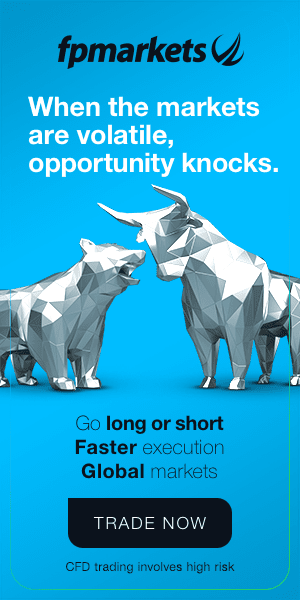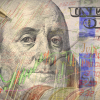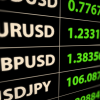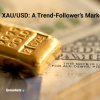OPENING CALL: The Australian share market is expected to open lower. The SPI Futures is expected to be down 39 points.
Market watchers predict the Bank of Canada will keep its benchmark interest rate unchanged Wednesday and hint it is ready to lower it to offset the fallout from escalating global trade tensions and slowing world economic growth.
Huawei accused the U.S. of “using every tool at its disposal” to disrupt its business, including launching cyberattacks on its networks and instructing law enforcement to “menace” its employees.
Overnight Summary
Each Market in Focus
Australian shares pared losses in late-afternoon trade to close slightly in the red.
The central bank’s widely expected decision to leave rates on hold weighed heavily on the market, which struggled into positive territory after Australia posted its first quarterly current-account surplus since 1975.
Down as much as 0.4% at one point, the S&P/ASX 200 closed 0.1% lower at 6573.4.
Telstra, down an additional 0.8% after lowering its FY 2020 guidance Monday, and the big miners were among the largest drags on the market. The heavily weighted major banks were mixed, and the industrials sector eked out a 0.2% gain.
U.S. stocks slumped intraday as fresh data showed that the manufacturing sector contracted in August, adding to worries about the global economy and impact of trade tensions between the U.S. and China.
The Dow Jones Industrial Average lost more than 350 points, or 1.4%, by midday. The S&P 500 dropped about 0.9% and the Nasdaq Composite fell 1.2%.
New data showed that the Institute for Supply Management’s gauge of U.S. factory activity slipped for the first time since 2016. The figures came after a string of lackluster manufacturing data around the world and trade talks between the U.S. and China spurred a wild August for major indexes. Meanwhile, many investors have been preoccupied with the prospect of a recession on the horizon.
Gold futures rallied back to their highest level in more than six years, as a decline in August U.S. manufacturing contributed to worries about the domestic economy.
Trade-related tensions, global growth concerns and the threat of the market being roiled by a disorderly exit by Britain from the European Union also drew investors to the haven metal.
The Institute for Supply Management’s manufacturing index fell to 49.1% in August from 51.2% in July. Any reading below 50% indicates worsening conditions. This is the first contraction in 35 months.
U.S. benchmark oil prices ended 2.1% lower at $53.94/barrel, the lowest closing price in a week, on concerns over China’s newly-launched tariffs on U.S. crude oil imports.
Oil’s downward pressure also came from Hurricane Dorian’s slow movement north and away from the U.S., which confirmed it won’t be hurting U.S. oil production in the Gulf of Mexico.
The dollar reached its strongest level in more than two years intraday as the gloomy outlook for global growth, rising U.S.-China trade tensions and political turmoil in Europe weighed on major currencies worldwide.
The ICE Dollar Index, which tracks the currency against a basket of its peers, rose to its highest level since mid-2017 before paring some gains to trade up 0.2% on the day.
The move came as the British pound dipped to new multiyear lows after Prime Minister Boris Johnson faced off against lawmakers to defend his Brexit plans, and China’s yuan dropping to its weakest in 11 years.
The Stoxx Europe 600 slipped 0.2%, with Germany’s DAX and France’s CAC 40 falling at least 0.3%.
London stocks close lower as the pound rose on fresh hopes that the U.K. could avoid crashing out of the EU with no deal. The FTSE 100 ended the session 0.2%, or 13.75 points lower at 7268.19.
Global stocks slipped a day after Beijing said it had lodged a complaint with the World Trade Organization over U.S. tariffs.
There was a mixed session in Asia, that saw indexes in mainland China gain, while Japanese stocks were flat and Korea’s Kospi edged down. Japan on Monday said its manufacturers cut spending during the second quarter for the first time in two years, adding to a series of recent data suggesting the U.S.-China trade fight was dampening the world economy.
South Korea’s benchmark Kospi edged down 0.2% to close at 1965.69, snapping its two-session winning streak. Trade was choppy as the index moved sideways in a narrow range throughout the session. Sentiment is largely downbeat amid lingering anxiety over the U.S.-China trade spat, though the setback was limited as investors have factored in much of its potential negative impact, Samsung Securities said.
Hong Kong’s Hang Seng Index closed 0.4% lower at 25527.85 as large-cap stocks broadly fall. Oil and gas companies were among the major decliners with China Petroleum & Chemical losing 1.5% and CNOOC shedding 1.0%. Most Chinese banks and telecom carriers on the index also end the session lower.
Malaysia’s FTSE Bursa Malaysia KLCI Index wiped off gains from the previous two sessions as it settled 1.3% lower at 1591.52, with only two out of its 30 constituents trading higher. Singapore shares closed slightly higher. The FTSE Straits Times Index gained 0.3% to close at 3090.63, among the few gainers in Asia.
And Indian shares closed lower amid growing signs the economy is losing steam. India’s manufacturing activity weakened in August, adding to concerns about the economy following disappointing first-quarter GDP data. The benchmark BSE Sensex fell 2.1% to 36562.91, dragged down by all sectors except technology.







 Access +10,000 financial
instruments
Access +10,000 financial
instruments

